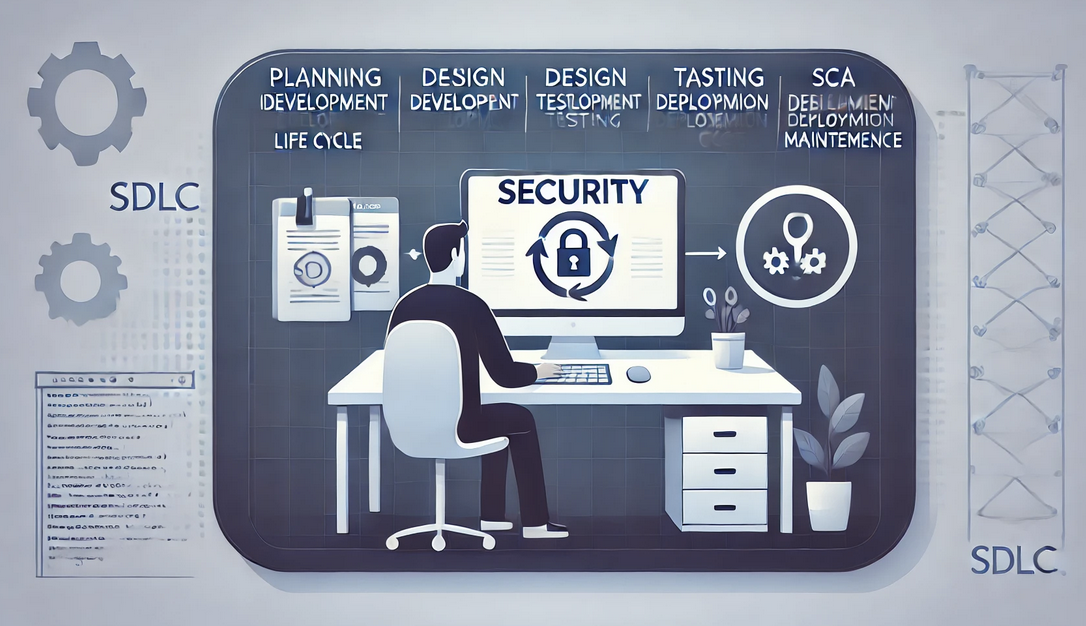
A Guide to Integrating Multiple Types of Security Tests into the SDLC
SDLC stands for Software Development Lifecycle. Now, every software engineer and developer worth their salt follows a structured approach in their work.
It's about designing, developing, testing, and deploying different software systems.

SDLC encompasses multiple stages, each containing specific tasks with tactical and strategic objectives. They aim to ensure that high-quality software is created. This psychological process allows for continuous improvements, iterations, and feedback.
The ongoing testing is geared towards perfection, with various security tests integrated into the SDLC. We will identify three primary security tests for inclusion: SAST, SCA, and DAST.
The testing must be able to identify and mitigate software vulnerabilities during the development process. When you correctly incorporate SAST into the SDLC, this ensures secure software, robust IT architecture, and ironclad trust.
There are several distinct stages in the SDLC, notably:
-
Planning—The first phase of SDLC is the planning phase. Stakeholders present their requirements, then define the scope of the project and establish objectives. Feasibility studies are conducted to ascertain whether the project is a good idea. The planning stage sets the foundation for the whole project. It includes the creation of a project plan, resource allocation, and risk assessment.
-
Design—During the design phase, software architecture is created according to the requirements, which are presented during the planning stage. The design includes high-level design (HLD) for the entire system architecture and low-level design (LLD) for detailed modular designs. Of course, software engineers and developers must take security considerations into account as they pertain to data protection and access controls.
-
Development—During the development phase, code is written based on the design documentation. Coding, unit testing, and code reviews are undertaken. The developers must adhere to the highest coding standards, development guidelines, and security protocols to maintain quality, consistency, and integrity.
-
Testing -Testing is the next phase of proceedings. It is all about validating the software based on the requirements to ensure that it works as intended. Different types of testing methods are available, notably unit testing, integration testing, system testing, and user acceptance testing. Vulnerabilities are identified using penetration testing and dynamic analysis.
-
Deployment—As soon as testing is over, the software is deployed to the production arena. This final phase involves deployment planning, establishing the production environment, and ensuring a smooth transition. Configuration management security measures and access controls are also implemented to protect the entire system.
-
Maintenance—The maintenance phase is a post-deployment phase of operations. It is undertaken to monitor performance, identify any updates or patches that need to be implemented, and more. These measures are sacrosanct for ensuring the software's overall security posture.
SDLC Test Integrations
Security must always be an ongoing consideration during the software development process. We can do precisely that by integrating securities into the SDLC. It is known as the Shift Left policy vis-a-vis security and emphasizes incorporating security measures into the SDLC early on. There are several security tests that can be implemented and integrated into the SDLC, namely:
-
Static Application Security Testing (SAST)
-
Dynamic Application Security Testing (DAST)
-
Software Composition Analysis (SCA)
These security tests are sacrosanct to the IT infrastructure's well-being, performance, and security. Now, there are practical approaches for integrating the security tests into the SDLC, notably the following methods:
|
Method |
Description |
|---|---|
|
Automated Security Testing |
Integrate SAST, DAST, and SCA tools into the CI/CD pipeline to automate security testing. This ensures that security tests are performed consistently and continuously throughout the SDLC. |
|
Security Champions |
First appoint security champions within development teams to advocate for security best practices. This ensures that security is considered at every stage of the SDLC. |
|
Training and Awareness |
Provide ongoing training for developers on secure coding practices. This is non-negotiable. Training must include information on the importance of security testing and how to use security tools well. |
|
Regular Audits and Reviews |
You must conduct regular security audits and code reviews to identify and address security vulnerabilities. This helps maintain a high level of security throughout the software's lifecycle. |
|
Collaboration |
Foster robust collaboration between the development, security, and operations teams. This ensures a unified approach to security. It helps in identifying and mitigating security risks early on in the process. |
The system is good to go once the aforementioned practical approaches for integrating the security test have been implemented. This comprehensive approach is necessary for building secure software.
The combination of SCA, DAST, and SAST as an all-encompassing security system is sacrosanct. It helps development teams, IT experts, and security consultants identify vulnerabilities early on. This all-in-one technique is really helpful in mitigating further damage and reducing security breaches.
Automated security testing requires hands-on involvement from IT practitioners. It's a multipronged approach that ensures security is prioritized as part of the software development lifecycle.
Trending
-
1 How Does SaaS Differ From IaaS And PaaS?
Fabrice Beaux -
2 Single Page Applications vs Multi-Page Applications
Fabrice Beaux -
3 Top 7 Effective Strategies for Multi-Language Website Development
Fabrice Beaux -
4 Boost Engagement to Infinity and Beyond: Unleashing AI-Driven Support
Anas Bouargane -
5 The Cheapest And Most Beautiful Stickers in CS2
Daniel Hall





Comments